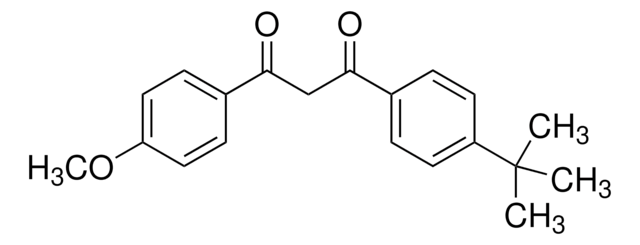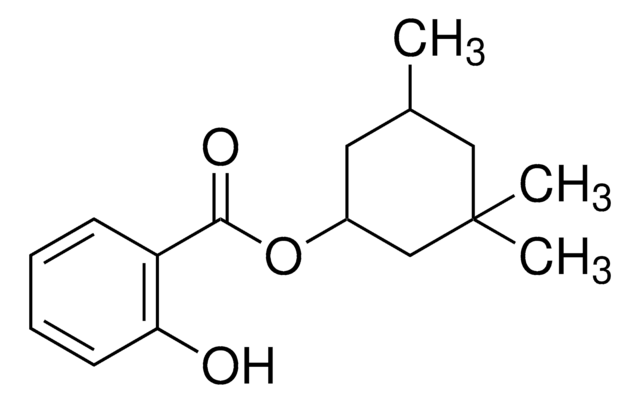PHR1121
2-Phenoxyethanol
Pharmaceutical Secondary Standard; Certified Reference Material
Sinonimo/i:
Ethylene glycol monophenyl ether, Phenylglycol
About This Item
Prodotti consigliati
Grado
certified reference material
pharmaceutical secondary standard
Livello qualitativo
agenzia
traceable to Ph. Eur. P0950000
traceable to USP 1526200
Famiglia di API
phenoxyethanol
CdA
current certificate can be downloaded
tecniche
HPLC: suitable
gas chromatography (GC): suitable
P. eboll.
244-246 °C
Punto di fusione
11-13 °C
Densità
1.107 g/mL at 20 °C (lit.)
applicazioni
pharmaceutical (small molecule)
Formato
neat
Temperatura di conservazione
2-30°C
Stringa SMILE
OCCOc1ccccc1
InChI
1S/C8H10O2/c9-6-7-10-8-4-2-1-3-5-8/h1-5,9H,6-7H2
QCDWFXQBSFUVSP-UHFFFAOYSA-N
Cerchi prodotti simili? Visita Guida al confronto tra prodotti
Descrizione generale
Pharmaceutical secondary standards for application in quality control, provide pharma laboratories and manufacturers with a convenient and cost-effective alternative to the preparation of in-house working standards.
2-Phenoxyethanol is a commonly used large spectrum-antimicrobial preservative used in cosmetic products and topical pharmaceutical preparations in the concentration range of 0.5–1.0%. It acts by inhibiting the coupling between the electron transport and phosphorylation reactions in mitochondria and disrupting ATP synthesis. It also prevents the activity of malate dehydrogenase and increases the permeability of cell membranes to potassium ions.
Applicazioni
- To determine phenoxyethanol and its major metabolite, phenoxyacetic acid by liquid chromatography-tandem mass spectrometry (LC-MS/MS) in rat plasma, urine, and 7 different tissue samples
- Development of a reverse phase ultra-high-performance liquid chromatographic (RP-UHPLC) method to quantify 2-phenoxyethanol from commercially available human vaccines
- Screening of cosmetic products (CPs) for 17 widely used preservatives by high-performance liquid chromatography-photodiode-array-electrospray ionization-mass spectrometry (HPLC-PDA-ESI/MS)
- Thin layer chromatography (TLC)-densitometric determination of hydrocortisone acetate and 2-phenoxyethanol in cream samples
- Analysis of eight volatile and semi-volatile ingredients in a topical formulation by gas chromatography (GC) coupled with a programmed temperature vaporizing (PTV) inlet and a flame ionization detector
Risultati analitici
Nota a piè di pagina
Prodotti consigliati
Esclusione di responsabilità
Prodotti correlati
Avvertenze
Danger
Indicazioni di pericolo
Consigli di prudenza
Classi di pericolo
Acute Tox. 4 Oral - Eye Dam. 1 - STOT SE 3
Organi bersaglio
Respiratory system
Codice della classe di stoccaggio
10 - Combustible liquids
Classe di pericolosità dell'acqua (WGK)
WGK 1
Punto d’infiammabilità (°F)
258.8 °F - closed cup
Punto d’infiammabilità (°C)
126 °C - closed cup
Scegli una delle versioni più recenti:
Possiedi già questo prodotto?
I documenti relativi ai prodotti acquistati recentemente sono disponibili nell’Archivio dei documenti.
I clienti hanno visto anche
Il team dei nostri ricercatori vanta grande esperienza in tutte le aree della ricerca quali Life Science, scienza dei materiali, sintesi chimica, cromatografia, discipline analitiche, ecc..
Contatta l'Assistenza Tecnica.












